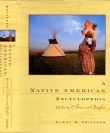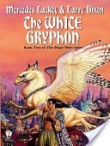
Текст книги "The British Study Edition of the Urantia Papers"
Автор книги: Tigran Aivazian
Жанр:
Религия
сообщить о нарушении
Текущая страница: 136 (всего у книги 295 страниц)
89:4.1 Sacrifice as a part of religious devotions, like many other worshipful rituals, did not have a simple and single origin. The tendency to bow down before power and to prostrate oneself in worshipful adoration in the presence of mystery is foreshadowed in the fawning of the dog before its master. It is but one step from the impulse of worship to the act of sacrifice. Primitive man gauged the value of his sacrifice by the pain which he suffered. When the idea of sacrifice first attached itself to religious ceremonial, no offering was contemplated which was not productive of pain. The first sacrifices were such acts as plucking hair, cutting the flesh, mutilations, knocking out teeth, and cutting off fingers. As civilization advanced, these crude concepts of sacrifice were elevated to the level of the rituals of self-abnegation, asceticism, fasting, deprivation, and the later Christian doctrine of sanctification through sorrow, suffering, and the mortification of the flesh.
89:4.2 Early in the evolution of religion there existed two conceptions of the sacrifice: the idea of the gift sacrifice, which connoted the attitude of thanksgiving, and the debt sacrifice, which embraced the idea of redemption. Later there developed the notion of substitution.
89:4.3 Man still later conceived that his sacrifice of whatever nature might function as a message bearer to the gods; it might be as a sweet savour in the nostrils of deity. This brought incense and other aesthetic features of sacrificial rituals which developed into sacrificial feasting, in time becoming increasingly elaborate and ornate.
89:4.4 ¶ As religion evolved, the sacrificial rites of conciliation and propitiation replaced the older methods of avoidance, placation, and exorcism.
89:4.5 The earliest idea of the sacrifice was that of a neutrality assessment levied by ancestral spirits; only later did the idea of atonement develop. As man got away from the notion of the evolutionary origin of the race, as the traditions of the days of the Planetary Prince and the sojourn of Adam filtered down through time, the concept of sin and of original sin became widespread, so that sacrifice for accidental and personal sin evolved into the doctrine of sacrifice for the atonement of racial sin. The atonement of the sacrifice was a blanket insurance device which covered even the resentment and jealousy of an unknown god.
89:4.6 Surrounded by so many sensitive spirits and grasping gods, primitive man was face to face with such a host of creditor deities that it required all the priests, ritual, and sacrifices throughout an entire lifetime to get him out of spiritual debt. The doctrine of original sin, or racial guilt, started every person out in serious debt to the spirit powers.
89:4.7 ¶ Gifts and bribes are given to men; but when tendered to the gods, they are described as being dedicated, made sacred, or are called sacrifices. Renunciation was the negative form of propitiation; sacrifice became the positive form. The act of propitiation included praise, glorification, flattery, and even entertainment. And it is the remnants of these positive practices of the olden propitiation cult that constitute the modern forms of divine worship. Present-day forms of worship are simply the ritualization of these ancient sacrificial techniques of positive propitiation.
89:4.8 ¶ Animal sacrifice meant much more to primitive man than it could ever mean to modern races. These barbarians regarded the animals as their actual and near kin. As time passed, man became shrewd in his sacrificing, ceasing to offer up his work animals. At first he sacrificed the best of everything, including his domesticated animals.
89:4.9 It was no empty boast that a certain Egyptian ruler made when he stated that he had sacrificed: 113,433 slaves, 493,386 head of cattle, 88 boats, 2,756 golden images, 331,702 jars of honey and oil, 228,380 jars of wine, 680,714 geese, 6,744,428 loaves of bread, 5,740,352 sacks of corn[1] [1]
corn, In 1955 text: coin. Early Egyptians developed a system of exchange of gold and silver rings, but true coinage was not introduced until the period of Persian domination (525-415 B.C.), during which the gold daric and silver siglos of Darius I (reigned from 521-485 B.C.) would have been used for some transactions. Coins were not actually minted in Egypt until ca.404-343 B.C. during the brief period of independence between the 1st Persian period and the reconquest by Artaxerxes III (342-336 B.C.), when silver imitation Athenian Owls were minted. Coins were regularly minted in Egypt during the Ptolemaic (283-30 B.C.) and subsequent Roman periods. The Harris Papyrus I http://en.wikipedia.org/wiki/Papyrus_Harris_I commemorates the reign of Rameses III, and was commissioned by his son Rameses IV at the former’s death in 1172 B.C. The list of gifts to the Gods in the Urantia Book at 89:4.9, excerpted from this papyrus, thus predates the earliest significant presence of coins in Egypt by 650-750 years. Therefore, the reference in The Urantia Book is a simple typo made when quoting a known source; but regardless of quantities, the 1955 text cannot be correct – it is erroneous on its face. This is the key difference between this item and the Greek/Creek item in 85:4.1. This precise list, including the “coin” typo, is found in William Graham Sumner/Albert G. Keller http://en.wikipedia.org/wiki/William_Graham_Sumner, The Science of Society, Yale, 1927.
[Закрыть]. And in order to do this he must needs have sorely taxed his toiling subjects.
89:4.10 Sheer necessity eventually drove these semisavages to eat the material part of their sacrifices, the gods having enjoyed the soul thereof. And this custom found justification under the pretense of the ancient sacred meal, a communion service according to modern usage.
5. SACRIFICES AND CANNIBALISM89:5.1 Modern ideas of early cannibalism are entirely wrong; it was a part of the mores of early society. While cannibalism is traditionally horrible to modern civilization, it was a part of the social and religious structure of primitive society. Group interests dictated the practice of cannibalism. It grew up through the urge of necessity and persisted because of the slavery of superstition and ignorance. It was a social, economic, religious, and military custom.
89:5.2 Early man was a cannibal; he enjoyed human flesh, and therefore he offered it as a food gift to the spirits and his primitive gods. Since ghost spirits were merely modified men, and since food was man’s greatest need, then food must likewise be a spirit’s greatest need.
89:5.3 Cannibalism was once well-nigh universal among the evolving races. The Sangiks were all cannibalistic, but originally the Andonites were not, nor were the Nodites and Adamites; neither were the Andites until after they had become grossly admixed with the evolutionary races.
89:5.4 The taste for human flesh grows. Having been started through hunger, friendship, revenge, or religious ritual, the eating of human flesh goes on to habitual cannibalism. Man-eating has arisen through food scarcity, though this has seldom been the underlying reason. The Eskimos and early Andonites, however, seldom were cannibalistic except in times of famine. The red men, especially in Central America, were cannibals. It was once a general practice for primitive mothers to kill and eat their own children in order to renew the strength lost in childbearing, and in Queensland the first child is still frequently thus killed and devoured. In recent times cannibalism has been deliberately resorted to by many African tribes as a war measure, a sort of frightfulness with which to terrorize their neighbours.
89:5.5 Some cannibalism resulted from the degeneration of once superior stocks, but it was mostly prevalent among the evolutionary races. Man-eating came on at a time when men experienced intense and bitter emotions regarding their enemies. Eating human flesh became part of a solemn ceremony of revenge; it was believed that an enemy’s ghost could, in this way, be destroyed or fused with that of the eater. It was once a widespread belief that wizards attained their powers by eating human flesh.
89:5.6 Certain groups of man-eaters would consume only members of their own tribes, a pseudospiritual inbreeding which was supposed to accentuate tribal solidarity. But they also ate enemies for revenge with the idea of appropriating their strength. It was considered an honour to the soul of a friend or fellow tribesman if his body were eaten, while it was no more than just punishment to an enemy thus to devour him. The savage mind made no pretensions to being consistent.
89:5.7 Among some tribes aged parents would seek to be eaten by their children; among others it was customary to refrain from eating near relations; their bodies were sold or exchanged for those of strangers. There was considerable commerce in women and children who had been fattened for slaughter. When disease or war failed to control population, the surplus was unceremoniously eaten.
89:5.8 ¶ Cannibalism has been gradually disappearing because of the following influences:
89:5.9 1. It sometimes became a communal ceremony, the assumption of collective responsibility for inflicting the death penalty upon a fellow tribesman. The blood guilt ceases to be a crime when participated in by all, by society. The last of cannibalism in Asia was this eating of executed criminals.
89:5.10 2. It very early became a religious ritual, but the growth of ghost fear did not always operate to reduce man-eating.
89:5.11 3. Eventually it progressed to the point where only certain parts or organs of the body were eaten, those parts supposed to contain the soul or portions of the spirit. Blood drinking became common, and it was customary to mix the “edible” parts of the body with medicines.
89:5.12 4. It became limited to men; women were forbidden to eat human flesh.
89:5.13 5. It was next limited to the chiefs, priests, and shamans.
89:5.14 6. Then it became taboo among the higher tribes. The taboo on man-eating originated in Dalamatia and slowly spread over the world. The Nodites encouraged cremation as a means of combating cannibalism since it was once a common practice to dig up buried bodies and eat them.
89:5.15 7. Human sacrifice sounded the death knell of cannibalism. Human flesh having become the food of superior men, the chiefs, it was eventually reserved for the still more superior spirits; and thus the offering of human sacrifices effectively put a stop to cannibalism, except among the lowest tribes. When human sacrifice was fully established, man-eating became taboo; human flesh was food only for the gods; man could eat only a small ceremonial bit, a sacrament.
89:5.16 ¶ Finally animal substitutes came into general use for sacrificial purposes, and even among the more backward tribes dog-eating greatly reduced man-eating. The dog was the first domesticated animal and was held in high esteem both as such and as food.
6. EVOLUTION OF HUMAN SACRIFICE89:6.1 Human sacrifice was an indirect result of cannibalism as well as its cure. Providing spirit escorts to the spirit world also led to the lessening of man-eating as it was never the custom to eat these death sacrifices. No race has been entirely free from the practice of human sacrifice in some form and at some time, even though the Andonites, Nodites, and Adamites were the least addicted to cannibalism.
89:6.2 Human sacrifice has been virtually universal; it persisted in the religious customs of the Chinese, Hindus, Egyptians, Hebrews, Mesopotamians, Greeks, Romans, and many other peoples, even on to recent times among the backward African and Australian tribes. The later American Indians had a civilization emerging from cannibalism and, therefore, steeped in human sacrifice, especially in Central and South America. The Chaldeans were among the first to abandon the sacrificing of humans for ordinary occasions, substituting therefor animals. About 2,000 years ago a tenderhearted Japanese emperor introduced clay images to take the place of human sacrifices, but it was less than 1,000 years ago that these sacrifices died out in northern Europe. Among certain backward tribes, human sacrifice is still carried on by volunteers, a sort of religious or ritual suicide. A shaman once ordered the sacrifice of a much respected old man of a certain tribe. The people revolted; they refused to obey. Whereupon the old man had his own son dispatch him; the ancients really believed in this custom.
89:6.3 ¶ There is no more tragic and pathetic experience on record, illustrative of the heart-tearing contentions between ancient and time-honoured religious customs and the contrary demands of advancing civilization, than the Hebrew narrative of Jephthah and his only daughter. As was common custom, this well-meaning man had made a foolish vow, had bargained with the “god of battles,” agreeing to pay a certain price for victory over his enemies. And this price was to make a sacrifice of that which first came out of his house to meet him when he returned to his home. Jephthah thought that one of his trusty slaves would thus be on hand to greet him, but it turned out that his daughter and only child came out to welcome him home. And so, even at that late date and among a supposedly civilized people, this beautiful maiden, after two months to mourn her fate, was actually offered as a human sacrifice by her father, and with the approval of his fellow tribesmen. And all this was done in the face of Moses’ stringent rulings against the offering of human sacrifice. But men and women are addicted to making foolish and needless vows, and the men of old held all such pledges to be highly sacred.
89:6.4 ¶ In olden times, when a new building of any importance was started, it was customary to slay a human being as a “foundation sacrifice.” This provided a ghost spirit to watch over and protect the structure. When the Chinese made ready to cast a bell, custom decreed the sacrifice of at least one maiden for the purpose of improving the tone of the bell; the girl chosen was thrown alive into the molten metal.
89:6.5 It was long the practice of many groups to build slaves alive into important walls. In later times the northern European tribes substituted the walling in of the shadow of a passerby for this custom of entombing living persons in the walls of new buildings. The Chinese buried in a wall those workmen who died while constructing it.
89:6.6 A petty king in Palestine, in building the walls of Jericho, “laid the foundation thereof in Abiram, his first-born, and set up the gates thereof in his youngest son, Segub.” At that late date, not only did this father put two of his sons alive in the foundation holes of the city’s gates, but his action is also recorded as being “according to the word of the Lord.” Moses had forbidden these foundation sacrifices, but the Israelites reverted to them soon after his death. The XX century ceremony of depositing trinkets and keepsakes in the cornerstone of a new building is reminiscent of the primitive foundation sacrifices.
89:6.7 ¶ It was long the custom of many peoples to dedicate the first fruits to the spirits. And these observances, now more or less symbolic, are all survivals of the early ceremonies involving human sacrifice. The idea of offering the first-born as a sacrifice was widespread among the ancients, especially among the Phoenicians, who were the last to give it up. It used to be said upon sacrificing, “life for life.” Now you say at death, “dust to dust.”
89:6.8 The spectacle of Abraham constrained to sacrifice his son Isaac, while shocking to civilized susceptibilities, was not a new or strange idea to the men of those days. It was long a prevalent practice for fathers, at times of great emotional stress, to sacrifice their first-born sons. Many peoples have a tradition analogous to this story, for there once existed a world-wide and profound belief that it was necessary to offer a human sacrifice when anything extraordinary or unusual happened.
7. MODIFICATIONS OF HUMAN SACRIFICE89:7.1 Moses attempted to end human sacrifices by inaugurating the ransom as a substitute. He established a systematic schedule which enabled his people to escape the worst results of their rash and foolish vows. Lands, properties, and children could be redeemed according to the established fees, which were payable to the priests. Those groups which ceased to sacrifice their first-born soon possessed great advantages over less advanced neighbours who continued these atrocious acts. Many such backward tribes were not only greatly weakened by this loss of sons, but even the succession of leadership was often broken.
89:7.2 An outgrowth of the passing child sacrifice was the custom of smearing blood on the house doorposts for the protection of the first-born. This was often done in connection with one of the sacred feasts of the year, and this ceremony once obtained over most of the world from Mexico to Egypt.
89:7.3 Even after most groups had ceased the ritual killing of children, it was the custom to put an infant away by itself, off in the wilderness or in a little boat on the water. If the child survived, it was thought that the gods had intervened to preserve him, as in the traditions of Sargon, Moses, Cyrus, and Romulus. Then came the practice of dedicating the first-born sons as sacred or sacrificial, allowing them to grow up and then exiling them in lieu of death; this was the origin of colonization. The Romans adhered to this custom in their scheme of colonization.
89:7.4 ¶ Many of the peculiar associations of sex laxity with primitive worship had their origin in connection with human sacrifice. In olden times, if a woman met head-hunters, she could redeem her life by sexual surrender. Later, a maiden consecrated to the gods as a sacrifice might elect to redeem her life by dedicating her body for life to the sacred sex service of the temple; in this way she could earn her redemption money. The ancients regarded it as highly elevating to have sex relations with a woman thus engaged in ransoming her life. It was a religious ceremony to consort with these sacred maidens, and in addition, this whole ritual afforded an acceptable excuse for commonplace sexual gratification. This was a subtle species of self-deception which both the maidens and their consorts delighted to practice upon themselves. The mores always drag behind in the evolutionary advance of civilization, thus providing sanction for the earlier and more savagelike sex practices of the evolving races.
89:7.5 Temple harlotry eventually spread throughout southern Europe and Asia. The money earned by the temple prostitutes was held sacred among all peoples – a high gift to present to the gods. The highest types of women thronged the temple sex marts and devoted their earnings to all kinds of sacred services and works of public good. Many of the better classes of women collected their dowries by temporary sex service in the temples, and most men preferred to have such women for wives.
8. REDEMPTION AND COVENANTS89:8.1 Sacrificial redemption and temple prostitution were in reality modifications of human sacrifice. Next came the mock sacrifice of daughters. This ceremony consisted in bloodletting, with dedication to lifelong virginity, and was a moral reaction to the older temple harlotry. In more recent times virgins dedicated themselves to the service of tending the sacred temple fires.
89:8.2 Men eventually conceived the idea that the offering of some part of the body could take the place of the older and complete human sacrifice. Physical mutilation was also considered to be an acceptable substitute. Hair, nails, blood, and even fingers and toes were sacrificed. The later and well-nigh universal ancient rite of circumcision was an outgrowth of the cult of partial sacrifice; it was purely sacrificial, no thought of hygiene being attached thereto. Men were circumcised; women had their ears pierced.
89:8.3 Subsequently it became the custom to bind fingers together instead of cutting them off. Shaving the head and cutting the hair were likewise forms of religious devotion. The making of eunuchs was at first a modification of the idea of human sacrifice. Nose and lip piercing is still practised in Africa, and tattooing is an artistic evolution of the earlier crude scarring of the body.
89:8.4 ¶ The custom of sacrifice eventually became associated, as a result of advancing teachings, with the idea of the covenant. At last, the gods were conceived of as entering into real agreements with man; and this was a major step in the stabilization of religion. Law, a covenant, takes the place of luck, fear, and superstition.
89:8.5 Man could never even dream of entering into a contract with Deity until his concept of God had advanced to the level whereon the universe controllers were envisioned as dependable. And man’s early idea of God was so anthropomorphic that he was unable to conceive of a dependable Deity until he himself became relatively dependable, moral, and ethical.
89:8.6 But the idea of making a covenant with the gods did finally arrive. Evolutionary man eventually acquired such moral dignity that he dared to bargain with his gods. And so the business of offering sacrifices gradually developed into the game of man’s philosophic bargaining with God. And all this represented a new device for insuring against bad luck or, rather, an enhanced technique for the more definite purchase of prosperity. Do not entertain the mistaken idea that these early sacrifices were a free gift to the gods, a spontaneous offering of gratitude or thanksgiving; they were not expressions of true worship.
89:8.7 ¶ Primitive forms of prayer were nothing more nor less than bargaining with the spirits, an argument with the gods. It was a kind of bartering in which pleading and persuasion were substituted for something more tangible and costly. The developing commerce of the races had inculcated the spirit of trade and had developed the shrewdness of barter; and now these traits began to appear in man’s worship methods. And as some men were better traders than others, so some were regarded as better prayers than others. The prayer of a just man was held in high esteem. A just man was one who had paid all accounts to the spirits, had fully discharged every ritual obligation to the gods.
89:8.8 Early prayer was hardly worship; it was a bargaining petition for health, wealth, and life. And in many respects prayers have not much changed with the passing of the ages. They are still read out of books, recited formally, and written out for emplacement on wheels and for hanging on trees, where the blowing of the winds will save man the trouble of expending his own breath.








